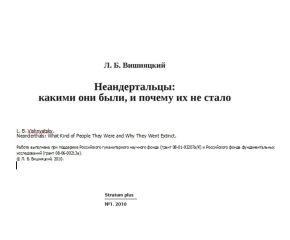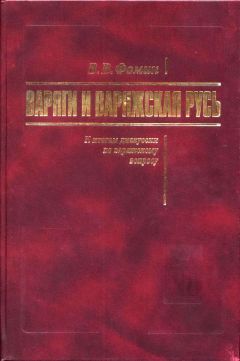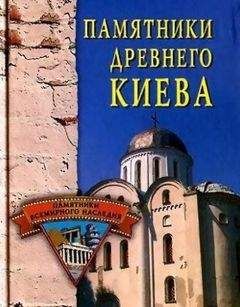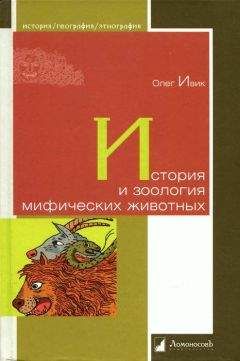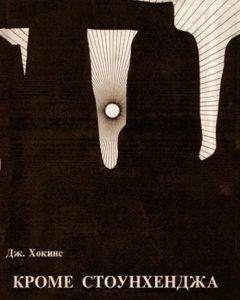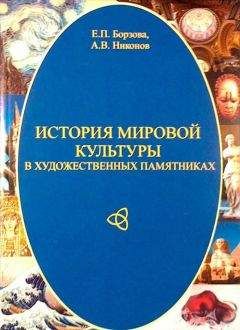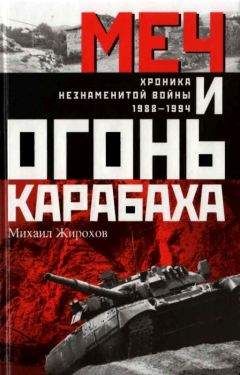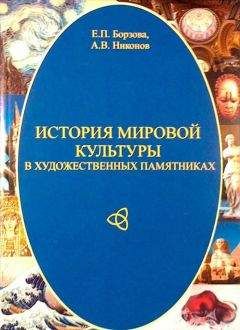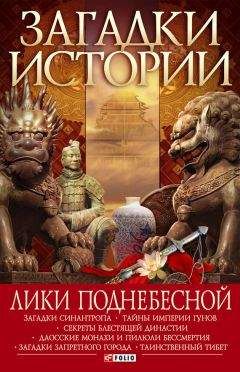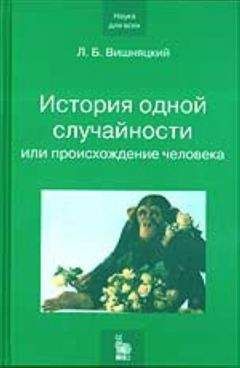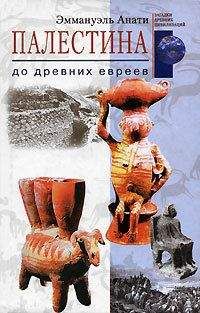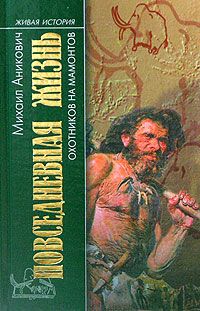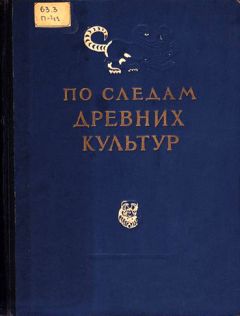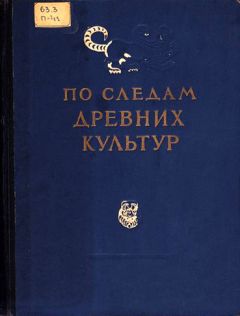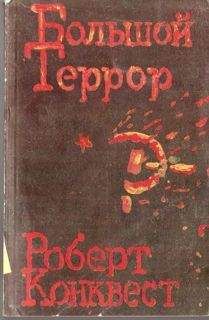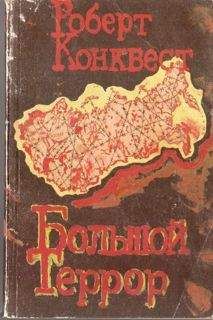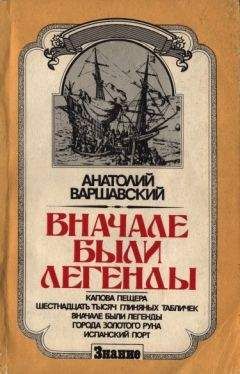Леонид Вишняцкий - Вооруженное насилие в палеолите
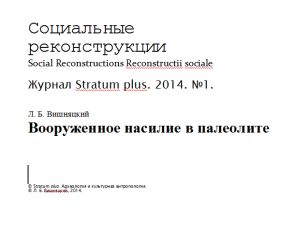
Скачивание начинается... Если скачивание не началось автоматически, пожалуйста нажмите на эту ссылку.
Жалоба
Напишите нам, и мы в срочном порядке примем меры.
Описание книги "Вооруженное насилие в палеолите"
Описание и краткое содержание "Вооруженное насилие в палеолите" читать бесплатно онлайн.
Статья посвящена вопросу о существовании и интенсивности вооруженного насилия на разных стадиях палеолита. В первых двух разделах даны обзор и анализ палеоантропологических и изобразительных данных, имеющих отношение к этой теме. В третьем разделе рассматривается проблема оценки изменений в интенсивности вооруженного насилия по ископаемым материалам. Собраны и представлены (табл. 1 и 2) все доступные сведения о находках на памятниках палеолита и мезолита костей людей и животных с застрявшими в них фрагментами каменных или костяных наконечников. Показано, что все находки такого рода возрастом старше 15 тыс. лет — это кости животных (10 костей 10 особей с 9 памятников). Напротив, после 15 тыс. лет соотношение резко меняется, и число находок человеческих костей с вонзившимися в них обломками оружия (29 костей 27 индивидов с 17 памятников) почти сравнивается с числом аналогичных находок костей животных. Учитывая, что количество раскопанных фаунистических остатков на несколько порядков превышает количество антропологических находок, такое равенство может свидетельствовать о важных изменениях в динамике вооруженного насилия (и жизни общества в целом) в конце палеолита.
Trinkaus E., Zimmerman M. R. 1982. Trauma among the Shanidar Neandertals. AJPA 57, 61–76.
Underhill A. P. 1989. Warfare during the Chinese Neolithic: A review of the evidence. In: Tkaczuk D. C., Vivian B. C. (eds.). Cultures in Conflict: Current Archaeological Perspectives. Calgary: University of Calgary Archaeological Association, 229–240.
Van Gurp et al. 1990: Van Gurp G., Hutchinson T. J., Alto W.A. 1990. Arrow wound management in Papua New Guinea. The Journal of Trauma 30, 183–188.
Vencl S. 1984. War and warfare in archaeology. Journal of Anthropological Archaeology 3, 116–132.
Vencl S. 1991. Interpretation des blessures causees par les armes au Mesolithique. L’Anthropologie 95, 219–228.
Vencl S. 1999. Stone Age warfare. In: Carman J., Harding A. (eds.). Ancient Warfare: Archaeological Perspectives. Phoenix Mill: Sutton Publishing, 57–72.
Walker P. L. 2001. A bioarchaeological perspective on the history of violence. ARA 30, 573–596.
Webb S. 1995. Palaeopathology of aboriginal Australians. Health and disease across a hunter-gatherer continent. Cambridge: Cambridge University Press.
Weidenreich F. 1943. The skull of Sinanthropus pekinensis. A comparative study on a primitive hominid skull. Paleontologia Sinica New Series D 10, iii-484.
Wendorf F. 1968. Site 117: A Nubian Final Paleolithic graveyard near Jebel Sahaba, Sudan. In: Wendorf F. (ed.). The Prehistory of Nubia. Dallas: Fort Burgwin Research Center & Southern Methodist University Press, 954–995.
Wendorf F., Schild R. 1986. The Wadi Kubbaniya Skeleton: A Late Paleolithic Burial from Southern Egypt. Dallas: Southern Methodist University Press.
Wu et al. 2011: Wu X.-J., Schepartz L.A., Liu W., Trinkaus E. 2011. Antemortem trauma and survival in the late Middle Pleistocene human cranium from Maba, South China. PNAS 108 (49), 19558—19662.
Zollikofer et al. 2002: Zollikofer C. P. E., Ponce de Leon M. S., Vandermeersch B., Leveque F. 2002. Evidence for interpersonal violence in the St. Ce- saire Neanderthal. PNAS 99, 6444–6448.
References
Anikovich, M. V., Timofeev, V. I. 1998. In Voennaia arkheologiia.
Oruzhie i voennoe delo v istoricheskoi i sotsial’noi pers- pektive (Archaeology of war and warfare in historical and social perspective). Saint Petersburg: State Hermitage, 16–20 (in Russian).
Bemdt, R. M., Berndt, K. Kh. 1981. Mir pervykh avstraliitsev (The world of the first Australians). Moscow: Nauka (in Russian).
Buzhilova, A. N. 2004. In Etologiia cheloveka i smezhnye dist- sipliny. Sovremennye metody issledovanii (Ethnology of the man and adjacent disciplines: modern research methods). Moscow: Institut etnologii i antropologii RAN, 21–35 (in Russian).
Buzhilova, A. P. 2005. Homo sapiens: Istoriia bolezni (Homo sapiens: A history of the illness). Moscow: Iazyki slavianskoi kul’tury (in Russian).
Vishnyatsky, L. B. 2005. Vvedenie v preistoriiu (Introduction to PreHistory). Kishinev: High Anthropological School University (in Russian).
Weinert, H. 1935. Proiskhozhdenie chelovechestva (Ursprung der Menschheit). Moscow; Leningrad: Gosudarstvennoe izdatel’stvo biologicheskoi i meditsinskoi literatury (in Russian).
Danilenko, V. N. 1955. In Sovetskaia etnografiia (Soviet Ethnography) 3. Moscow: Nauka, 56–61 (in Russian).
Zenin, V. I., Leshchinsky, S. V., Zolotarev, K. V., Grutes, P. M., Nado, M.-Kh. 2006. In Arkheologiia, etnografiia i antropologiia Evrazii (Archaeology, Ethnology and Anthropology of Eurasia) (1), 41–53 (in Russian).
Nuzhnyj, D. Yu. 2008. Rozvytok mykrolitychnoi tekhnyky v kam’yanomu vitsi (Development of the Microlithic Tech-
nique in the Stone Age). Kiev: KNT (in Ukrainian).
Praslov, N. D. 1995. In Tsitologiia (Cytology) 37, 634–635 (in Russian).
Telegin, D. Ya. 1961. In Arkheolohiya (Archaeology) 13, 3—19 (in Ukrainian).
Shnirelman, V. A. 1994. In Voina i mir v rannei istorii chelovechest- va (War and peace in the early history of mankind). Vol. 1. Moscow: Institute of Anthropology and Ethnography or N.N. Miklukho-Maklai Institute of Ethnology and Anthropology, 9—176 (in Russian).
Anderson, J. E. Late Paleolithic skeletal remains from Nubia. In: F. Wendorf (ed.). The Prehistory of Nubia. Dallas: Fort Burgwin Research Center & Southern Methodist University Press, 996—1040.
Arias Cabal, P., Ontanon Peredo, R., Alvarez Fernandez, E., Apa- ricio, M. T., Chauvin, A., Clemente Conte, I., Cueto Ra- pado, M., Gonzalez Urquijo, J. E., Ibanez Estevez, J. J., Tapia Sagarna, J., Teira Mayolini, L. C. 2005. La estructu- ra Magdaleniense de La Garma A. Aproximacion a la or- ganizacion espacial de un habitat paleolitico. En: Ferreira Bicho N. (ed.). O Paleolitico. Actas do IV Congresso de arqueologia peninsular. Faro: Universidade do Algarve, 123–141.
Bachechi, L., Fabbri, P.-F., Mallegni, F. 1997. An arrow-caused lesion in a Late Upper Palaeolithic human pelvis. CAn 38, 135–140.
Bahn, P. G., Vertut, J. 1988. Images of the Ice Age. New York: Facts on File.
Balout, L. 1958. Algerie prehistorique. Paris: A. M. G.
Bar-Yosef, O. 2010. Warfare in Levantine Early Neolithic. A hypothesis to be considered. Neo-Lithics 1/10, 6—10.
Bartosiewicz, L., Gal, E. 2008. Symptoms of aggression on animal bones from archaeological sites. Animal welfare, etologia es tartastechnologia 4, 3—25.
Bello, S. M., Parfitt, S.A., Stringer, C. B. 2011. Earliest directly- dated human skull-cups. PLoS ONE 6 (2): e17026. doi:10.1371/journal.pone.0017026
Bocquentin, F., Bar-Yosef, O. 2004. Early Natufian remains: evidence for physical conflict from Mt. Carmel, Israel. JHE 47, 19–23.
Begouen, H., Cugulieres Miquel, H. 1922. Vertebre humaine traver- see par une lame en quartzite. Revue anthropologique 32, 230—2.
Behrens, H. W. 1978. Der Kampf in der Steinzeit (Ein Diskussions- beitrag vom Aspekt des Prahistorikers. Mitteilungen der Anthropologischen Gessellschaft in Wien 108, 1–7.
Belcastro, M. G., Condemi, S., Mariotti, V. 2010. Funerary practices of the Iberomaurusian population of Taforalt (Tafoughalt, Morocco, 11–12,000 BP): the case of Grave XII. JHE 58, 522–532.
Beltran, A. 1982. Rock Art of the Spanish Levant. The Imprint of Man. Cambridge: Cambridge University Press.
Bettinger, R. L. 2013. Effects of the bow on social organization in Western North America. Evolutionary Anthropology 22, 118–123.
Boaz, N. T., Ciochon, R. L. 2004. Headstrong hominids. Natural History 113 (1), 28–34.
Boaz, N. T., Ciochon, R. L. 2004а. Dragon Bone Hill: An Ice-Age Saga of Homo erectus. New York: Oxford University Press.
Boeda, E., Geneste, J. M., Griggo, C., Mercier, N., Muhesen, S., Reyss, J. L., Taha, A., Valladas, H. 1999. A Levallois point embedded in the vertebra of a wild ass (Equus africanus): hafting, projectiles and Mousterian hunting weapons. Antiquity 73, 394–402.
Boesch, C. 2009. The Real Chimpanzee. Sex Strategies in the Forest. Cambridge: Cambridge University Press.
Bokonyi, S. 1984. Animal Husbandry and Hunting in Tac-Gorsium. The Vertebrate Fauna of a Roman Town. Budapest: Aka- demiai Kiado.
Boroneant, V., Nicolaescu-Plop^or, D. 1990. Lesions traumati- ques violentes datant de l’Epipaleolithique tardif du sud- ouest de la Roumanie. Anthropologie 28, 55–65.
Bratlund, B. 1996. Hunting strategies in the Late Glacial on North-
№ 1.2014
ern Europe: A survey of the faunal evidence. Journal of World Prehistory 10, 1—48.
Brennan, M. U. 1991. Health and Disease in the Middle and Upper Paleolithic of Southwestern France: A Bioarcheological Study. Unpublished Ph. D. dissertation. New York University.
Buzhilova, A. P. 2005. The environment and health condition of the Upper Palaeolithic Sunghir people of Russia. Journal of Physiological Anthropology and Applied Human Science 24, 413–418.
Caspari, R. 1997. Evidence of pathology on the frontal bone from Gongwangling. AJPA 102, 565–568.
Christensen, J. 2004. Warfare in the European Neolithic. Acta Ar- chaeologica 75, 129–156.
Churchill, S. E., Franciscus, R. G., McKean-Peraza, H.A., Daniel, J.A., Warren, B. R. 2009. Shanidar 3 Neandertal rib puncture wound and Paleolithic weaponry. JHE 57, 163–178.
Clottes, J., Courtin, J. 1994. La Grotte Cosquer. Paris: Editions du Seuil.
Cordier, G. 1990. Blessures prehistoriques animales et humaines avec armes ou projectiles conserves. Bulletin de la Societe prehistorique frangaise 87, 462–482.
Dams, L. 1984. Les peintures rupestres du Levant espagnol. Paris: Picard.
Defleur, A., White, T., Valensi, P., Slimak, L., Cregur-Bonnoure, E. 1999. Neanderthal cannibalism at Moula-Guercy, Ardeche, France. Science 286, 128–131.
Delluc, B., Delluc, G. 1971. La grotte ornee de Sous-Grand-Lac (Dordogne). Gallia prehistoire 14, 245–252.
Estabrook, V. H. 2009. Sampling biases and new ways of addressing the significance of trauma in Neandertals. Unpublished Ph. D. dissertation. The University of Michigan.
Estabrook, W. H., Frayer, D. W. 2013. Trauma in the Krapina Ne- andertals: Violence in the Middle Paleolithic? In: C. Knu- sel, M. Smith (eds.). The Routledge Handbook of the Bioarchaeology of Human Conflict. London: Routledge, 67–89.
Ferguson, R. B. 2013. Pinkers’s List. Exaggerating prehistoric war morality. In: D. P. Fry (ed.). War, Peace, and Human Nature: The Convergence of Evolutionary and Cultural Views. Oxford: Oxford University Press, 112—131
Formicola, V. 2007. From the Sunghir children to the Romito dwarf. Aspects of the Upper Paleolithic funerary landscape. CAn 48, 446–453.
Franciscus, R. G., Holliday, T. W. 2013. Crossroads of the Old World: Late hominin evolution in Western Asia. In: Smith F. H., Ahern J. C. M. (eds.). The Origins of Modern Humans: Biology Reconsidered. Hoboken: Wiley, 45–88.
Guilaine, J., Zammit, J. 2005. The Origins of War. Violence in Prehistory. Malden: Blackwell.
Guthrie, R. D. 2005. The Nature of Paleolithic Art. Chicago: The University of Chicago Press.
Henry-Gambier, D. 2005. Evolution des pratiques funeraires en Italie au Paleolithique superieur. In: Vialou D., Renault-Mikosky J., Pathou-Mathis M. (eds.). Comportements des hommes du Paleolithique moyen et superieur en Europe: territoires et milieux. Liege: ERAUL 111, 213—29.
Henry-Gambier, D. 2008. Comportement de populations d’Europe au Gravettien: pratiques funeraires et interpretations. Paleo 20, 165–204.
Hernandez Perez, M. S., Marset, P. F. I., Ferrer, E. C. 1995. Arte ru- pestre en Alicante. Alicante: Fundacion Banco Exterior.
Jackes, M. K. 2004. Osteological evidence for Mesolithic and Neolithic violence: Problems of interpretation. In: Roksandic M. (ed.). Violent Interactions in the Mesolithic: Evidence and Meaning. BAR IS 1237. Oxford: Archaeopress, 23–39.
Judd, M. 2004. News from the British Museum. British Association for Biological Anthropology and Osteoarchaeology Annual Review 5, 5.
Klaatsch, H. 1920. Der Werdegang der Menschheit und die Entste- hung der Kultur. Berlin: Deutsches Verlagshaus Bong und
Co.
Klima, B. 1988. A triple burial from the Upper Paleolithic of Dol- ni Vestonice, Czechoslovakia. JHE 16, 831–835.
№ 1.2014
Koslowski, S. K., Sachse-Koslowska, E. 1993. Maszycka Cave: a Magdalenian site in Southern Poland. Jahrbuch der Ro- misch-Germanischen Zentralmuseums 40, 115–205.
LeBlanc, S. 2010. Early Neolithic warfare in the Near East and its broader implications. Neo-Lithics 1/10, 40–49.
Leroi-Gourhan, A. 1968. The art of prehistoric man in Western Europe. London: Thames & Hudson.
Letourneux, C., Petillon, J.-M. 2008. Hunting lesions caused by osseous projectile points: experimental results and archaeological implications. JAS 35, 2849–2862.
Lopez-Montalvo, E. 2011. Violence et mort dans l’art rupestre du Levant: groupes humains et territoire. Dans: Baray L., Honegger M., Dias-Meirinho M. H. (dir.J. L’armement et l’image du guerrier dans les societes anciennes: de Vobjet a la tombe. Dijon: Editions universitaires de Dijon, 19–42.
Martin, H. 1907. Recherches sur Revolution du Mousterien dans le gisement de la Quina. Tome 1. Paris: Schleicher.
Martin, H. 1934. Pathologie osseuse prehistorique. Blessure par arme de jet sur une vertebre de renne. Compte-rendu de la 58e session de l’Association frangaise pour l’avance- ment des sciences. Rabat, 183–184.
McCown, T. D., Keith, A. 1939. The Stone Age of Mount Carmel. Vol. 2. The Fossil Human Remains from the Levalloiso- Mousterian. Oxford: Clarendon.
Mezzena, F. 1976. Nuova interpretazione delle incisioni parietali pa- leolitiche della Grotta Addaura a Palermo. Rivista di scien- ze preistoriche 31, 61–85.
Monk, S. J. 1997. Conflict and competition in Spanish prehistory: the role of warfare in societal development from the late fourth to third millennium BC. Journal of Mediterranean Archaeology 10 (1), 3—32.
Morel, P. 1998. La grotte du Bichon (La Chaux-de-Fonds, canton de Neuchatel, Suisse). Dans: Les derniers chasseurs-cueil- leurs du massif jurassien et de ses marges. Lons-le-Sauni- er: Centre jurassien du patrimoine, 88–93.
Munzel, S. C., Conard N. J. 2004. Cave bear hunting in the Hohle Fels, a cave site in the Ach Valley, Swabian Jura. Revue de Paleobiologie 23 (2): x-xx.
Napierala, H., Honeisen, M., Trautmann, M. 2010. «Stirb an einem anderen Tag» — Schussverletzung eines Rentiers vom Magdalenienfundplatz Kesslerloch bei Thayngen (Kt. Schaffhausen). Archaologisches Korrespondenzblatt 40, 457–466.
Nash, J. 2005. Assessing rank and warfare-strategy in prehistoric hunter-gatherer society: a study of representational warrior figures in rock-art from the Spanish Levant, southeastern Spain. In: Pearson M. P., Thorpe I. J. N. (eds.). Warfare, Violence and Slavery in Prehistory. Proceedings of a Prehistoric Society Conference at Sheffield University. (BAR IS 1374). Oxford: Archaeopress, 75–87.
Nikolskiy, P., Pitulko, V. 2013. Evidence from the Yana Palaeolithic site, Arctic Siberia, yields clues to the riddle of mammoth hunting. JAS 40, 4189–4197.
Noe-Nygaard, N. 1974. Mesolithic hunting in Denmark illustrated by bone injuries caused by human weapons. JAS 1, 217–248.
Noe-Nygaard, N., Milan, J., Hede, M. U., Holm, J. 2007. A reindeer track from a drill core, and lake basin development of the Late Glacial Lille Slotseng kettle-hole basin, South-East Jylland, Denmark. Bulletin of the Geological Society of Denmark 55, 85–95.
Orschiedt, J. 2008. Der Fall Krapina — neue Ergebnisse zur Frage van Kannibalismus beim Neandertaler. Quarter 55, 63–81.
Petillon, J.-M., Letourneax, C. 2003. Au retour de la chasse… Observations experimentales concernant les impacts sur le gibier, la recuperation et la maintenance des projectiles dans le Magdalenien superieur d’Isturitz (Pyrenees-Atlan- tiques). Prehistoire Anthropologie Mediterraneennes 12, 173–188.
Подписывайтесь на наши страницы в социальных сетях.
Будьте в курсе последних книжных новинок, комментируйте, обсуждайте. Мы ждём Вас!
Похожие книги на "Вооруженное насилие в палеолите"
Книги похожие на "Вооруженное насилие в палеолите" читать онлайн или скачать бесплатно полные версии.
Мы рекомендуем Вам зарегистрироваться либо войти на сайт под своим именем.
Отзывы о "Леонид Вишняцкий - Вооруженное насилие в палеолите"
Отзывы читателей о книге "Вооруженное насилие в палеолите", комментарии и мнения людей о произведении.





